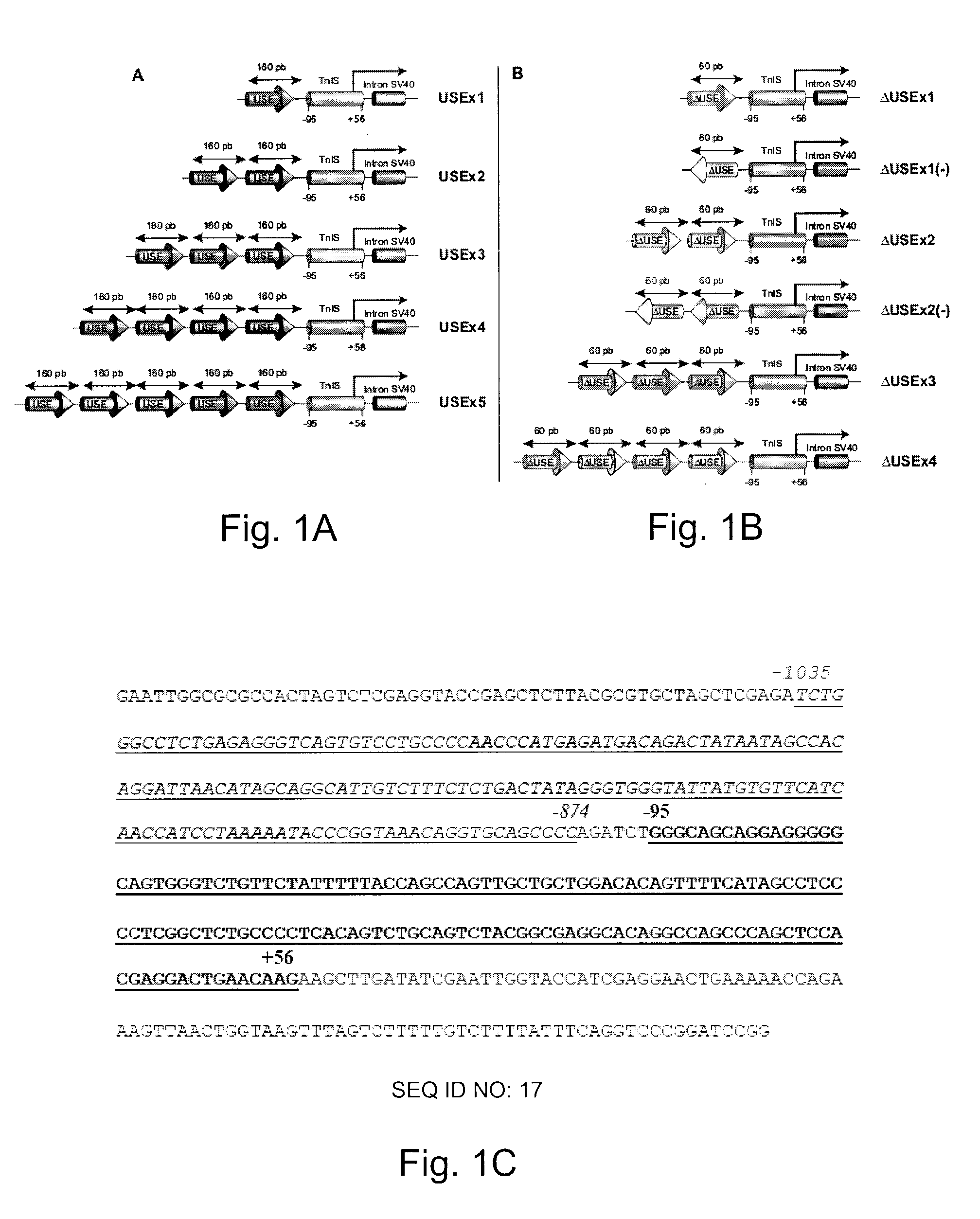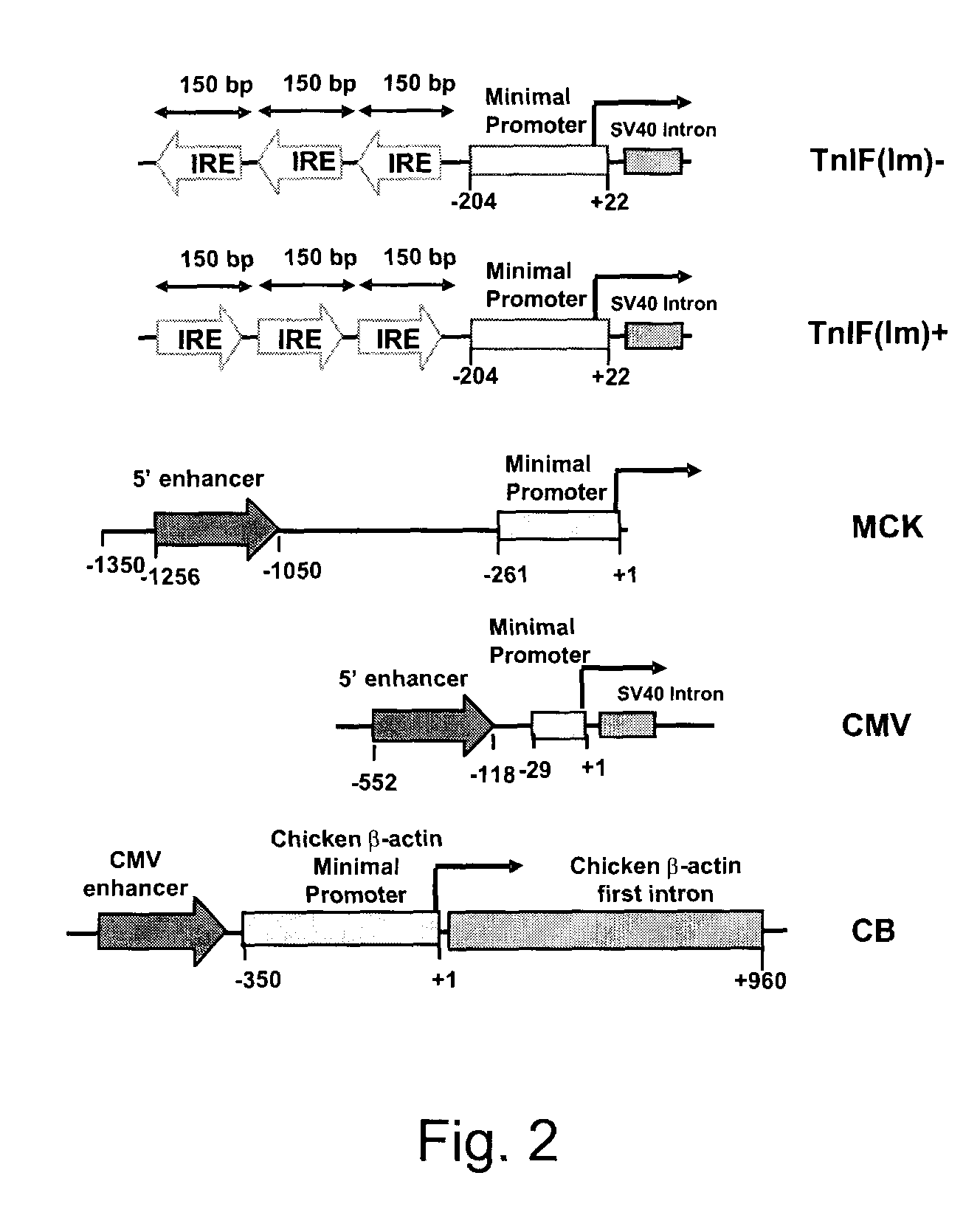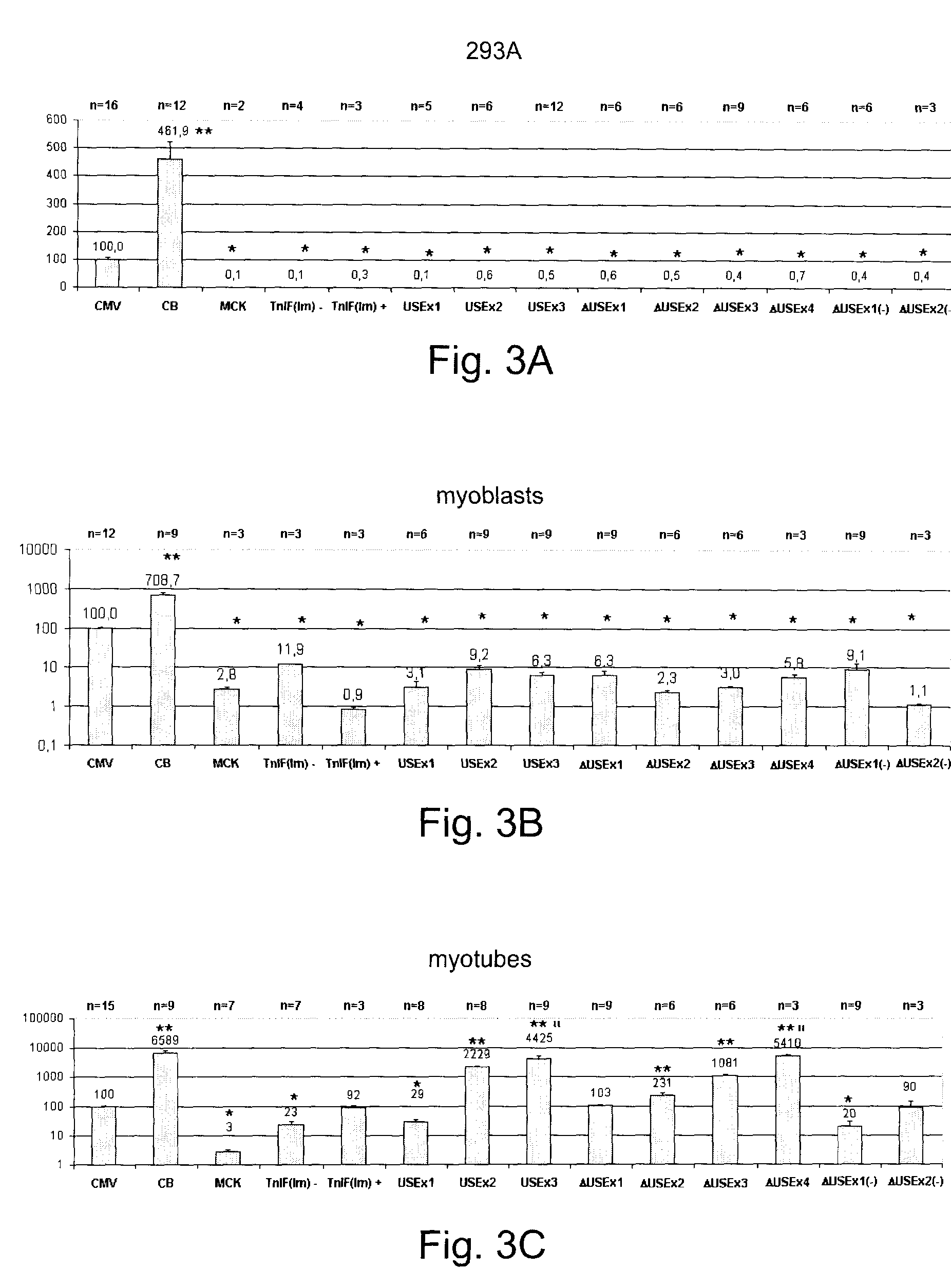Constructs for enhancement of gene expression in muscle
a gene expression and muscle technology, applied in the field of regulatory elements, can solve the problems of increasing the cost, reducing safety, and weakening the strength of tissue specific regulatory elements, and achieve the effects of small size, advantageous strength, and strong constructs for controlling gene expression
- Summary
- Abstract
- Description
- Claims
- Application Information
AI Technical Summary
Benefits of technology
Problems solved by technology
Method used
Image
Examples
Embodiment Construction
[0029]Materials and Methods:
[0030]Preparation of Enhancer / Promoter Constructs
[0031]Plasmids were prepared using standard methods of molecular biology and they were purified by using the Plasmid Maxi Kit (Qiagen Inc, Mississauga, On, Canada) according to the manufacture's recommendations. The nucleotide sequences of the various constructs made were confirmed by DNA sequencing. Plasmid (pCMVβ), which encodes the enzyme β-galactosidase (β-gal) regulated by the CMV early enhancer / promoter, was purchased from Clontech Laboratories (Palo Alto, Calif.). Plasmid pCMVImβ was constructed by replacing the ATGTT sequence within the SV40 intron of pCMVβ with ATATC. The intron was amplified by PCR using primers 5′-CCTAGAAGTAAAGGCGTATCCACTGAGGAGCAG-3′ (SEQ ID NO: 1) and 5′-CGGTAAACTGCCCACTTG-3′ (SEQ ID NO: 2). The PCR product was digested with XhoI and inserted into the StuI and XhoI sites of pCMVβ. A plasmid expressing β-gal controlled by the MCK enhancer / promoter (pMCKβ) was constructed by remov...
PUM
| Property | Measurement | Unit |
|---|---|---|
| diameter | aaaaa | aaaaa |
| volume | aaaaa | aaaaa |
| cell density | aaaaa | aaaaa |
Abstract
Description
Claims
Application Information
 Login to View More
Login to View More - R&D
- Intellectual Property
- Life Sciences
- Materials
- Tech Scout
- Unparalleled Data Quality
- Higher Quality Content
- 60% Fewer Hallucinations
Browse by: Latest US Patents, China's latest patents, Technical Efficacy Thesaurus, Application Domain, Technology Topic, Popular Technical Reports.
© 2025 PatSnap. All rights reserved.Legal|Privacy policy|Modern Slavery Act Transparency Statement|Sitemap|About US| Contact US: help@patsnap.com



